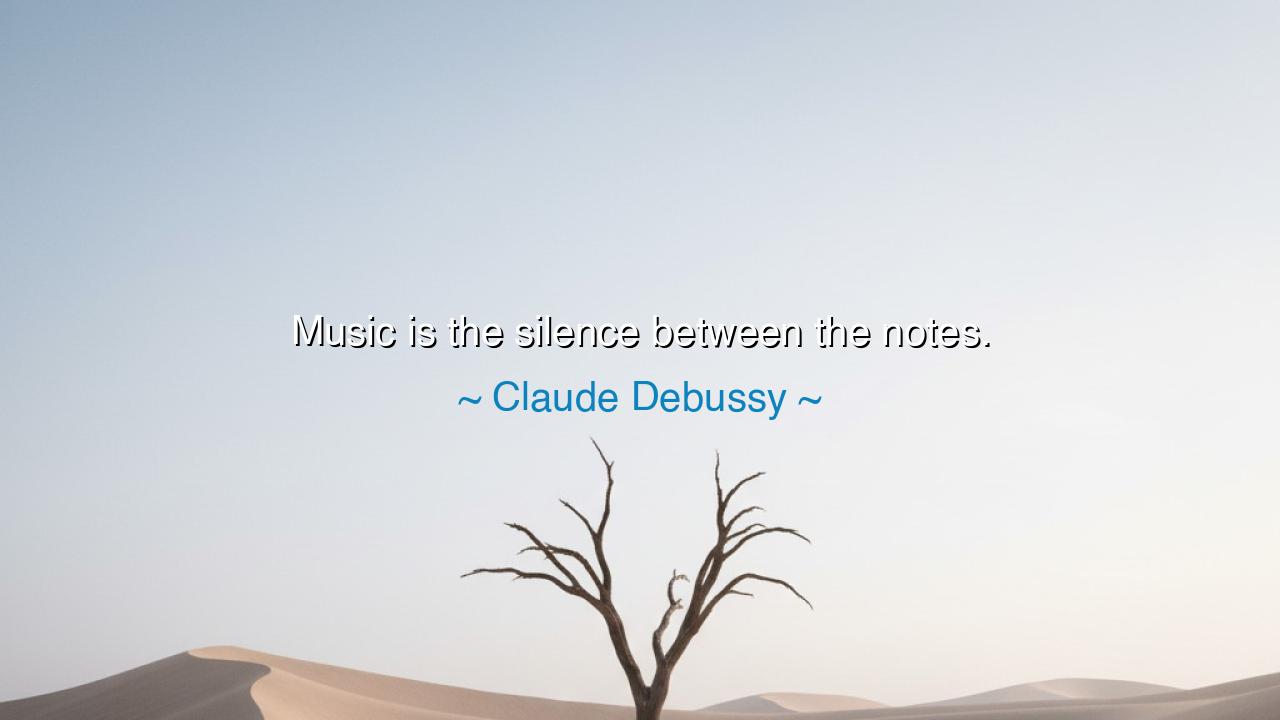
Music is the silence between the notes.






Hear, O seeker of wisdom, the words of Claude Debussy, master of impression and color in sound: “Music is the silence between the notes.” At first, these words may seem strange, for how can silence itself be music? Yet in truth they carry the weight of eternal understanding—that sound without pause is chaos, and meaning arises not from constant noise but from the interplay of voice and stillness. Debussy, who painted with tones as others paint with light, knew that music is not only what is played, but what is withheld, the breath that gives shape to the song.
The first wisdom here is that silence is not emptiness, but form. Just as the sculptor shapes marble by cutting away what is not needed, so the musician shapes melody by the spaces he leaves untouched. Without silence, notes would clash endlessly, with no rhythm, no phrasing, no emotion. It is the silence that gives contour, depth, and meaning. In this, Debussy speaks not only of music but of life itself—for without pauses, reflection, and rest, our deeds would blur together, and the beauty of existence would be lost.
Think of the ancient orators, who spoke not in hurried torrents, but with deliberate pauses. Their silences gave weight to their words, allowing the hearts of listeners to absorb truth. So it is in music: a single note, followed by silence, can pierce deeper than a thousand tones unbroken. Debussy understood that the heart does not hunger for noise, but for rhythm, for balance, for the sacred dance of sound and silence.
History gives us many examples of this truth. Consider the compositions of Mozart, who often left intentional rests in his symphonies, creating tension that made the returning melody all the more powerful. Or Beethoven, who in his Fifth Symphony held silence before unleashing the fateful motif—so that the silence itself became a herald of destiny. Audiences trembled not only at the sound but at the breathless pause before it. Here, Debussy’s wisdom is confirmed: music is the silence between the notes.
What lesson does this teaching give to us, children of tomorrow? It is this: do not fill your life with ceaseless noise. Embrace the pauses, the rests, the quiet spaces that give meaning to your labor. Just as a song needs silence to become music, your life needs stillness to become wisdom. Without reflection, achievement becomes hollow. Without rest, progress becomes destruction. Without silence, words lose their power.
Practical wisdom follows: cultivate silence in your days. When you work, pause to breathe. When you speak, let your words be framed by quiet so they may strike with greater truth. When you create, do not fear the empty space—for it is often in the empty that the beautiful takes form. Practice listening, not only to others but to the silence within, where the truest music of your soul is played.
Thus, remember always the wisdom of Debussy: “Music is the silence between the notes.” Let it guide not only your hearing of songs, but your living of life. In every silence, there is music waiting to be born, and in every pause, a meaning deeper than sound. Cherish the silence as much as the song, and you will discover harmony not only in music, but in the rhythm of your very existence.






AAdministratorAdministrator
Welcome, honored guests. Please leave a comment, we will respond soon